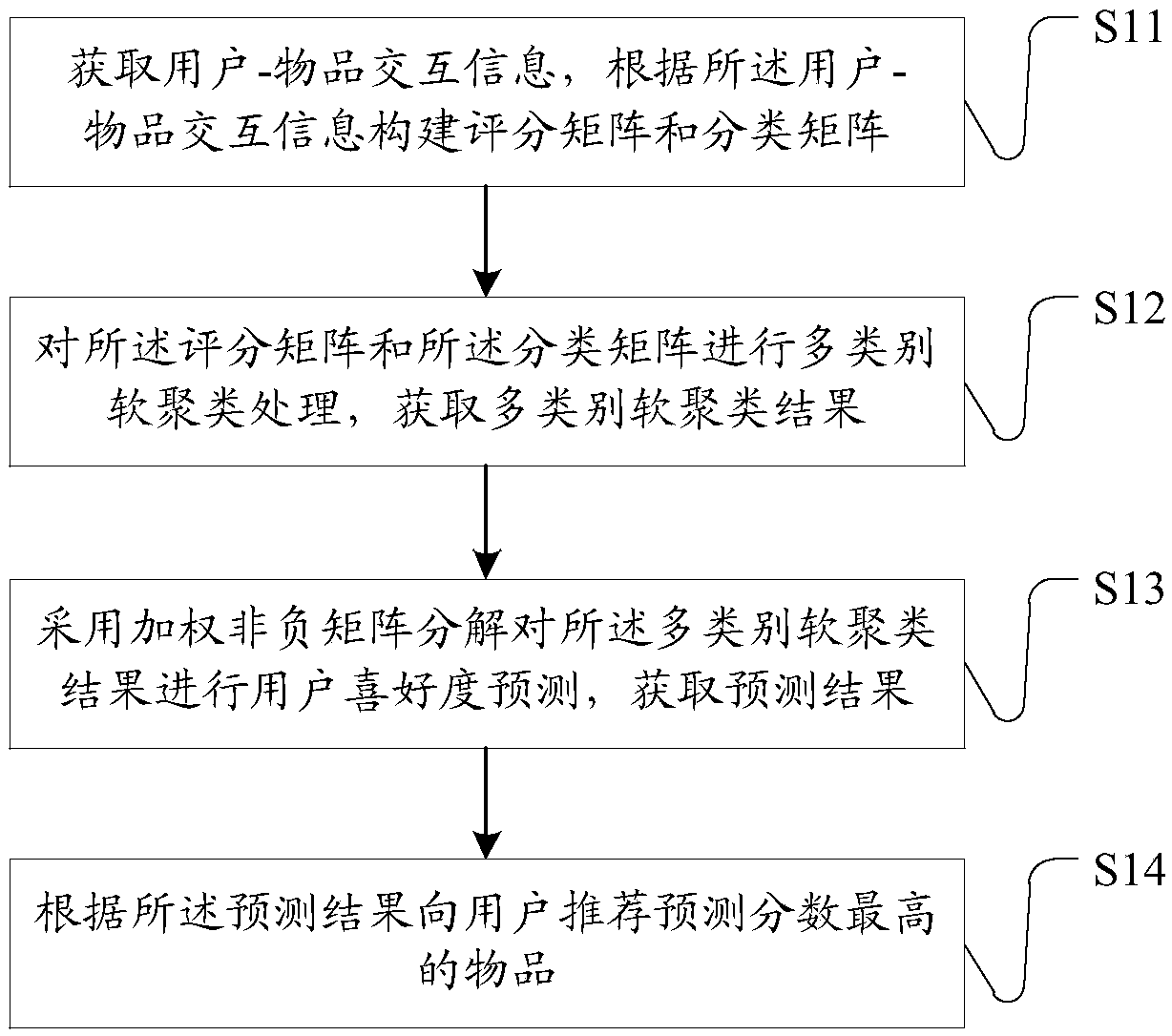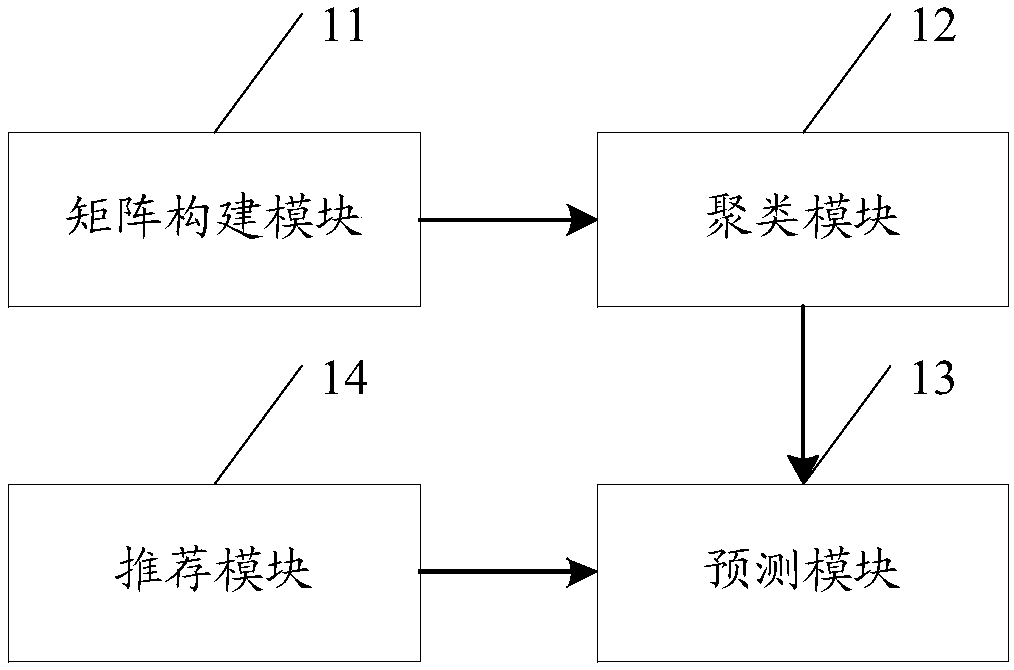Recommendation method and system based on multi-category joint soft clustering
A recommendation method and recommendation system technology, applied in the field of data analysis, can solve problems such as difficulty in recommendation, lack of historical behavior data for new users, and inability to know user preferences, etc., to improve prediction performance, reduce sparsity, and high prediction accuracy Effect
- Summary
- Abstract
- Description
- Claims
- Application Information
AI Technical Summary
Problems solved by technology
Method used
Image
Examples
Embodiment Construction
[0062] The following will clearly and completely describe the technical solutions in the embodiments of the present invention with reference to the accompanying drawings in the embodiments of the present invention. Obviously, the described embodiments are only some, not all, embodiments of the present invention. Based on the embodiments of the present invention, all other embodiments obtained by persons of ordinary skill in the art without creative efforts fall within the protection scope of the present invention.
[0063] figure 1 is a schematic diagram of the method flow chart of the recommendation method based on multi-category joint soft clustering in the embodiment of the present invention, as shown in figure 1 As shown, the recommended methods include:
[0064] S11: Obtain user-item interaction information, and construct a scoring matrix and a classification matrix according to the user-item interaction information;
[0065] S12: Perform multi-category soft clustering ...
PUM
 Login to View More
Login to View More Abstract
Description
Claims
Application Information
 Login to View More
Login to View More - R&D
- Intellectual Property
- Life Sciences
- Materials
- Tech Scout
- Unparalleled Data Quality
- Higher Quality Content
- 60% Fewer Hallucinations
Browse by: Latest US Patents, China's latest patents, Technical Efficacy Thesaurus, Application Domain, Technology Topic, Popular Technical Reports.
© 2025 PatSnap. All rights reserved.Legal|Privacy policy|Modern Slavery Act Transparency Statement|Sitemap|About US| Contact US: help@patsnap.com



